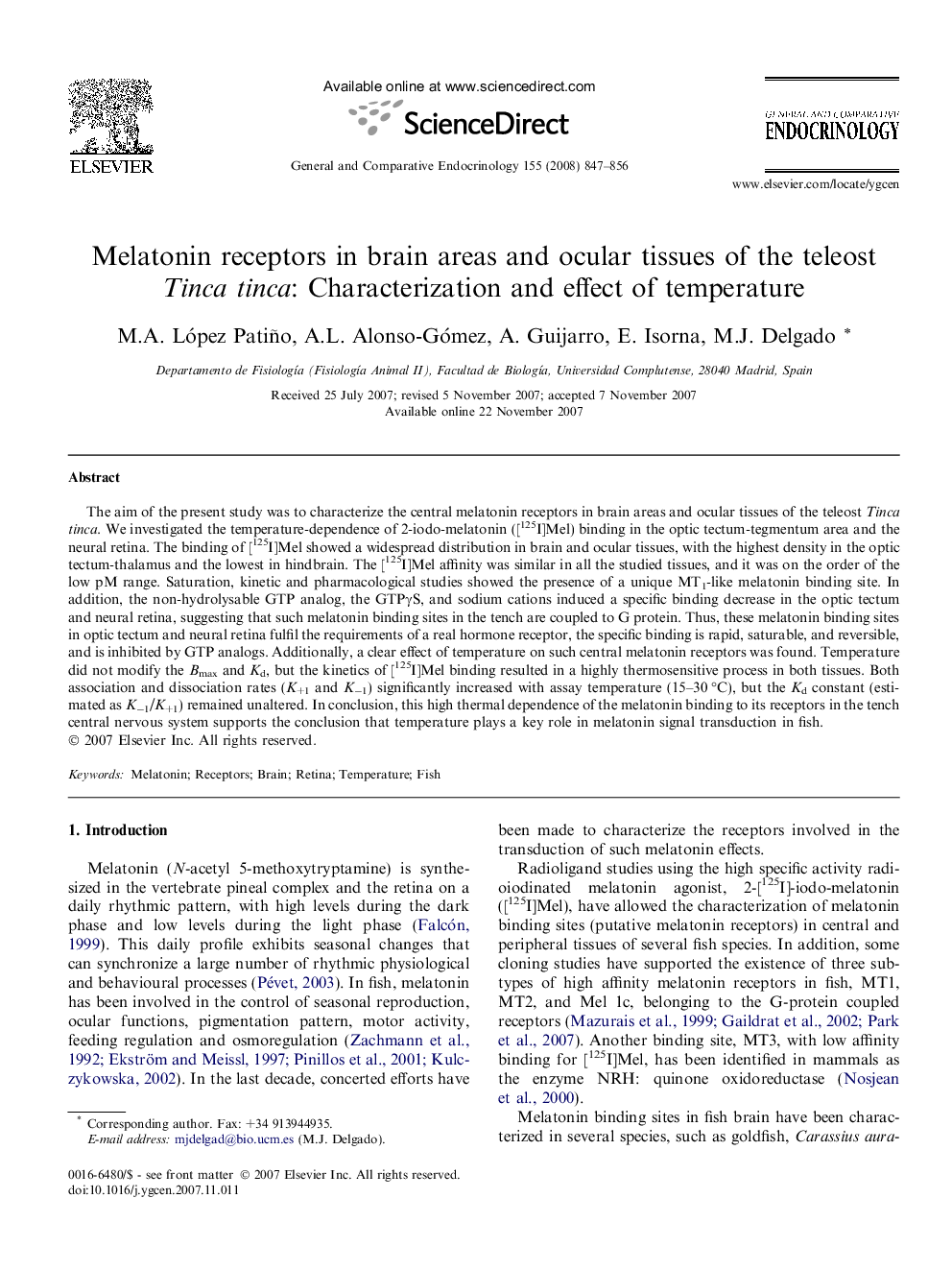| کد مقاله | کد نشریه | سال انتشار | مقاله انگلیسی | نسخه تمام متن |
|---|---|---|---|---|
| 2802071 | 1156185 | 2008 | 10 صفحه PDF | دانلود رایگان |

The aim of the present study was to characterize the central melatonin receptors in brain areas and ocular tissues of the teleost Tinca tinca. We investigated the temperature-dependence of 2-iodo-melatonin ([125I]Mel) binding in the optic tectum-tegmentum area and the neural retina. The binding of [125I]Mel showed a widespread distribution in brain and ocular tissues, with the highest density in the optic tectum-thalamus and the lowest in hindbrain. The [125I]Mel affinity was similar in all the studied tissues, and it was on the order of the low pM range. Saturation, kinetic and pharmacological studies showed the presence of a unique MT1-like melatonin binding site. In addition, the non-hydrolysable GTP analog, the GTPγS, and sodium cations induced a specific binding decrease in the optic tectum and neural retina, suggesting that such melatonin binding sites in the tench are coupled to G protein. Thus, these melatonin binding sites in optic tectum and neural retina fulfil the requirements of a real hormone receptor, the specific binding is rapid, saturable, and reversible, and is inhibited by GTP analogs. Additionally, a clear effect of temperature on such central melatonin receptors was found. Temperature did not modify the Bmax and Kd, but the kinetics of [125I]Mel binding resulted in a highly thermosensitive process in both tissues. Both association and dissociation rates (K+1 and K−1) significantly increased with assay temperature (15–30 °C), but the Kd constant (estimated as K−1/K+1) remained unaltered. In conclusion, this high thermal dependence of the melatonin binding to its receptors in the tench central nervous system supports the conclusion that temperature plays a key role in melatonin signal transduction in fish.
Journal: General and Comparative Endocrinology - Volume 155, Issue 3, 1 February 2008, Pages 847–856